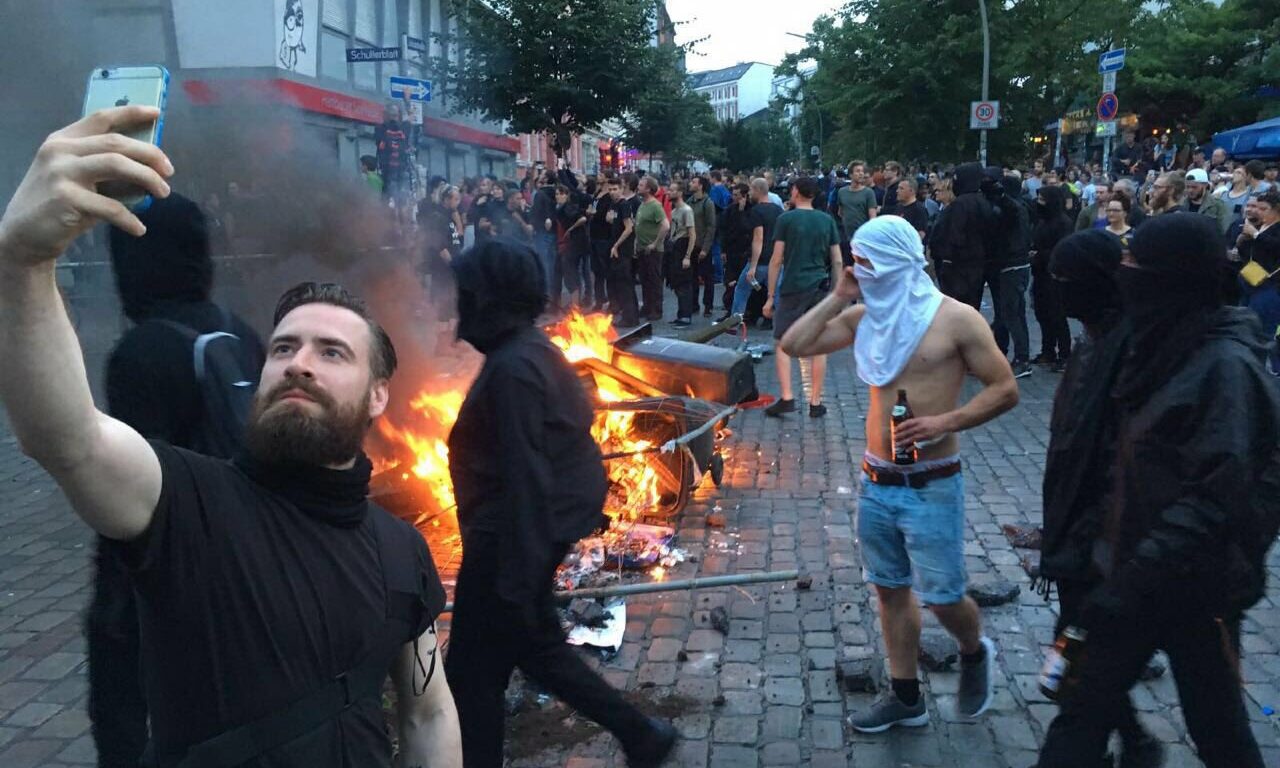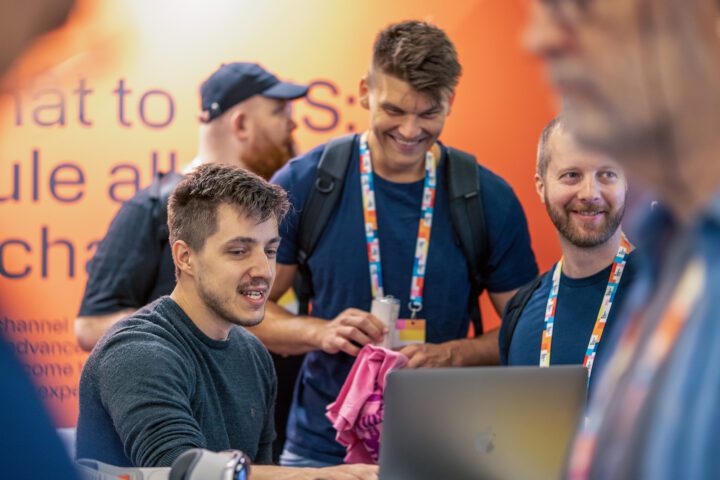Gen Z Oversharing is a problem, but what NGOs (EFF for example) can do about it?
Oversharing problem on the Facebook platform (Facebook, Instagram, Messenger, Whatsapp) is a continuous malady, but what civic sector and especially NGOs like EFF should do about it?
A. Background to the organisation and the social marketing problem
In the last 14 years, Facebook has grown into an unchecked social media behemoth – users amassed to “the network” and started sharing their life moments, not knowing that user generated content (UGC) is analyzed and stored to be later used for unclear advertising or political purposes (Confessore, 2018). Facebook scandals, such as Cambridge Analytica and US senate hearings have been alarming for online users, but the actual steps that users take in securing their online privacy is questionable – 69% percent of users born before 1997 (Millennials and Gen X-ers) stated they don’t always consider the impact of things they post online. The percentage is more intimidating for users born after 1997 (Gen Z-ers) – 81% of them don’t always consider the impacts that their UGC could have on themselves or others (Cohen, 2020).

Information oversharing is endangering privacy of all connected users and this behaviour leads to all sorts of potential problems – hacking attacks, unwanted advertising, phishing attempts, political prosecution and identity theft scams. Problem lies in the fact that oversharing is both ignorant and unintentional i.e. users do not know what sort of metadata, location data, textual information, timestamp, IP address or photo tag info is accessible within their UGC.

Electronic Frontier Foundation (EFF) is a global non-profit organization that has taken a lead role in surfacing oversharing privacy concerns. Main goals of the organization encompass defending free speech, innovation and especially digital privacy. EFF has been a frequent whistle blower of users practices and this has been seen across various media outlets and their own website. EFF Blog authors (EFF, 2009) are especially critical and to the point:
“…we at EFF are worried that today’s changes will lead to Facebook users publishing to the world much more information about themselves than they ever intended…”
B. Situation analysis
(i) PEST, Competition, Opportunities, Threats
Political – privacy laws are in constant flux – always adhering to the evolution of social media (Farrell, 2019). State regulations vary across continents and on one hand, lawmakers want to keep Facebook “in check” (opportunity), but on the other hand, they depend on the taxes and economic benefits that these companies provide (threat).
Economical – Social media depends on advertising as their main source of revenue (Rodriguez, 2020). Formula for generating profits is clear – more UGC equals more targeted advertisements. There is a threat that Facebook will pressure users to post frequently as this maximizes their revenue.
Social – Facebook usage is growing which in turn increases UGC creation – In 2019, the percentage of US adults that have an account on Facebook rose above 60% across all age segments (Vogels, 2019). Time spent in front of a screen has also increased as we can see users posting their content while colliding with signposts (Kim and Min, 2017) or even live-streaming their city’s earthquake. Both trends are threats.

Technological – Technology will enable UGC sharing on all forms and devices (threat), while on the other hand, it will enable ease of use for various privacy settings such as biometrics access, encryption and data masking. This technological convenience is a feature of privacy – which is an opportunity.
Direct competition – Facebook, new social networks such as TikTok or Snapchat are trying to empower users in uploading more UGC
Indirect competition – Schools and institutions that empower pupils in using more technology (both opportunity and threat), other social marketing messages such as incentives and prizes that reward uploading of UGC (threat)
(ii) Strengths/Competences and Weaknesses
Strengths/Competences – EFF is an organization with 30 years of experience navigating digital landscape. They have a team of 80 people and more than two dozen successful litigated cases regarding privacy issues (EFF Web, 2009).
Weaknesses – Unclear problem to users – users don’t observe negative aspects of oversharing and privacy problems on a daily basis (such as they observe with smoking, unhealthy dietary habits or plastic bags over-usage).

C. Stakeholder analysis
Issues of oversharing on Facebook are connected to a myriad of stakeholders. NGOs, Gen Z-ers, Governments, Local authorities, Advertisers, Facebook and its competitors.
Key players in the problem are EFF, Users parents, Facebook and social media competitors. All these stakeholders have a high level of interest and realistic power over privacy context. For instance, parents could completely forbid the usage of UGC and while unrealistically how it sounds, they have some influence over their children. Facebook has a tremendous impact on the problem as it could both reduce user flows to share UGC or work on various tools that would surface privacy settings.

On the diagonal spectrum are users – research shows that they have low interest (Cohen, 2020) and low power. One of our marketing mix tactics would be to motivate users towards high interest.
High interest, low power is reserved for advertisers, influencers and digital agencies that have economical benefits over UGC.
High Power, Low interest stakeholder are governments, but this could easily switch between low and high interest, based on the surfaced scandals or socio-technological changes (assumption). Governments and authorities currently act based on granular issues, not based on proactivity (ICO Web , 2020) and this lies within the “low interest” section of the matrix.

D. Market segmentation and targeting
(i) Target Market
Behavioural change that we want to accomplish is “Think before sharing”. The end goal is that users have a privacy “peace of mind”. We will define user segments by age as this reflects on technical savviness and UGC patterns in each group
- Gen Z-ers, born between 1996 and 2002+
- Millennials, born between 1977 and 1995
- Gen X, born between 1964 and 1976
- Boomers, born between 1946 and 1964
Further research into technology savviness, screen time and interest in privacy will define our target market.

Gen Z-ers spend most time on social media. Also this generation is clearly defined as users that care less about privacy then other segments – this clearly puts them on the most endangered list and a clear target users for needed behaviour change.

Additionally, Gen Z-ers are more vulnerable to exploitation, scams and hacks due to less life experience (an assumption). Further market research could help elaborate these assumptions i.e. do Gen Z-ers consider themselves attuned to possible scams, hacks or identity thefts? If yes, these resistance factors to change would modify our marketing mix outcomes. Conducting a focus group could also highlight those issues.
Trends of social media usage patterns are also interesting as the next graph shows.


To conclude, our target market is Gen Z-ers in the US who use Instagram on a daily basis. Note that by the end of 2020, Gen Z-ers will account for approximately 40% of all users (Campaign monitor, 2020) and their motivation for change should be to have a “peace of mind”.
(ii) Upstream organization
Ideal upstream organization is Facebook Inc. itself as they could modify their Instagram User eXperience (UX) to reduce questionable UGC, surface privacy settings and help users in setting their overall security. Additional upstream organizations are privacy lawmakers, such as specific groups who declare privacy guides and laws. In the US, this is the Senate Subcommittee on Antitrust, Competition Policy and Consumer Rights.
E. Marketing objectives
Marketing objectives are complementary:
- Reduce uploading, up to two UGC per week by the end of 2020
- Reduce screen time by 20% by the end of 2021
- Audit privacy settings every summer and winter holidays. Goal is to increase interest in privacy issues
Reducing uploads is a clear goal, but we also need to decrease screen-time if we want to change the underlying behaviour. Less screen time will directly decrease UGC. Indirectly, this will lower the feedback, likes or comments that users give to other users for their UGC – i.e. this will lower the need for other users to post UGC (assumption).
F. Marketing mix/relationship marketing plans
Product – “Peace of mind” is a product that EFF will promote and integrate into the marketing mix. This integrated message reflects an overall approach to securing privacy and anonymity when using social media, specifically Instagram. Product needs to be modeled around user stories so that Gen Z-ers can create a long-term relationship with having a piece of mind when using social media. For instance, a story of identity theft or stalking attempt would resonate with Gen Z-ers (BBC, 2016) as this is not a distant theme such as other privacy concerns – espionage by government or wrongly-placed adverts. EFF wants to change target group behaviour to “think before sharing”.
Price – Users will “pay” for increased security and privacy with decreased interaction from their peers. So, less prestige, less attention and less received affection is a “currency” in this transaction if we model the cost according to the Maslow’s hierarchy of needs.
People – Stakeholder analysis has shown that all of us participate in social media life. And while parents and teachers could be the most appropriate partners for the needed change of behaviour, Gen Z-ers friends, peers and influencers will probably be the most effective about the outcomes of the needed marketing objectives. Influencers could especially be efficient promoters of the product and directly talk with users who post large amounts of UGC.
Place – social media, specifically Facebook platform (FB, IG, Messenger, Whatsapp) will be a primary place where the interactions happen, although we should not forget physical places such as clubs, bars, restaurants where peers, influencers and friends have an impact over sharing UGC. Also, communicating with parents and family, who can be powerful allies in this scenario, will happen inside family homes and gatherings.
Physical – analyzed social problems are occurring in virtual (digital) space and most advertisements or processes will still take place in online context. However, there is an option that the transaction could have a physical presence such as advertisement on the public transport or table flyers in popular clubs.
Process – Social media automation and online analytics will help in distributing the product to users. For instance, remarketing ads that users have seen can be connected to automated Facebook polls that will ask users if they audited their privacy settings or reduced their uploading of UGC. The goal is to evaluate impact through automated means (Smith, Harris, 2015).
Promotion – EFF plans 6 pillars of promotion
- Influencer marketing – organization will reach out to several influencer agencies and audit what kind of influencers are appropriate for communicating EFF “Think before share” messages . This could be influencers that had negative experience with privacy issues so they could tell an authentic story to Gen Z-ers. As aforementioned research presented, influencers could motivate users to change their UGC behaviour. Influencers campaign should promote a “peace of mind” mindset so that Gen Z-ers start to have a high-interest in privacy concerns. Ideally, Gen Z-ers themselves could become advocates for EFF.
- Digital advertising via Facebook Platform – Influencer marketing should be empowered via traditional Facebook and Instagram ads that tell a story of privacy concerns through multimedia creatives. Storytellers should be influencers and the segmentation would be micro targeted towards EFF chosen user base
- Interactive quizzes, games and polls – various interactive forms will be used for monitoring and analytics of our marketing approach.. EFF will present these interactive forms only to users that received promotional messages from the campaign. Questions inside quizzes and polls will be inline with EFF stated objectives – for instance “how many photos did you upload this week?” or “How much screen time do you have on your iPhone this month (with instructions how to see Screen time on iPhone)” These automated quizzes or polls would be used for typical promotion, goal monitoring and final campaign analysis.
- Content marketing – specifically used for promotion towards Upstream stakeholder defined in section D (ii). EFF will produce various stories, infographics, cases and articles about Gen Z-ers and their oversharing problem. Also, EFF will constantly monitor points 1,2,3 and send results to interested media outlets. Additionally, EFF will always ask for a comment and invite to debate with every representative from Upstream organizations
- Public Relations and events – Representatives from EFF will be present on industry events such as Web Summit, Techcrunch disrupt or SXSW and clearly communicate what are the current campaign effects.
- Partnership with festivals, clubs and bars. Gen Z-ers need to see that “thinking before sharing” is a normal approach that other Gen z-ers also take. Having a “peace of mind” booth or visuals should be positioned at various festivals, concerts, bars or clubs where they promote and communicate campaign messages.
G. Implementation
Our marketing promotion involves evangelism – building relationships through influencers (Smith, Harris, 2015). This could be problematic from an operational point of view as we would need to additionally sub-segment Gen Z users in the US by the influencer type. Also, this action could be seen as hypocritical – Influencers can be seen as the least competent to talk about reducing UGC (Dennis, 2019). To circumvent this, EFF would work only with influencers who had negative privacy stories such as identity theft or stalking attempts. Possible usage of focus groups and formative evaluation for choosing influencers (Smith, Harris, 2015) will be discussed while planning with a digital agency that manages influencers.
H. Evaluation
EFF Impact evaluation tool in this marketing mix would be to utilize automated interactive Facebook polls and quizzes to maximum extent – a quantitative data collection approach (Smith, Harris, 2015). These digital tools will be connected to our Facebook advertising campaigns so the EFF team would be able to target only Gen Z-ers that have seen the advertisements or communicated with influencers. Then, the EFF would ask specific research questions about their privacy settings, uploading habits and spending time on social media. For instance, polls or quizzes would instruct users in sending their screen time from iPhone or Android devices with clear instructions on how to obtain this. There is a technical possibility that EFF could produce a digital tool that analyzes UGC per week, posting frequency and alarm users if their privacy settings have not been altered in the past 6 months. This depends on the final budget for development, but automated digital tools would help in analyzing end goals of this campaign – did the behaviour of Gen Z-ers changed during EFF actions and to what extent. Also, FB polls and quizzes could be used to monitor advocatism (Smith, Harris, 2015) – an event where users themselves start to spread EFF or Influencers messages.
Possible problem is that Gen Z users communicating with influencers is a long-term approach and measuring this through limited interactive forms or polls could give only a subset of needed information. Additional post implementation research could be conducted with influencers to see what was their dynamic with followers during the campaign – i.e. how did the followers respond after influencers shared their negative stories? Did influencers receive some of the direct feedback or comments about privacy, stalking or identity theft? In short, how did Influencers remain in active contact with their followers?
I. References
- BBC (2017) Identity fraud up by 57% as thieves ‘hunt’ on social media, available at https://www.bbc.com/news/uk-36701297
- Cohen Remi (2020) Are Gen Z-ers More Security Savvy Online than Millennials?, available at https://www.f5.com/labs/articles/threat-intelligence/are-gen-z-ers-more-security-savvy-online-than-millennials-
- Confessore Nicholas (2018) Cambridge Analytica and Facebook: The Scandal and the Fallout So Far, available at https://www.nytimes.com/2018/04/04/us/politics/cambridge-analytica-scandal-fallout.htm
- EFF Website, 2020, Legal cases, Privacy victories, Available at https://www.eff.org/victories?issue=privacy
- Farrell Henry (2019) Zuckerberg’s announcement changes everything for Facebook, available at https://www.washingtonpost.com/politics/2019/03/06/zuckerbergs-announcement-changes-everything-facebook/
- Green Dennis (2019), The most popular social media platforms with Gen Z, available at https://www.businessinsider.com/gen-z-loves-snapchat-instagram-and-youtube-social-media-2019-6
- ICO Online (2020), Actions taken against organization, available at https://ico.org.uk/action-weve-taken/enforcement/?facet_type=&facet_sector=&facet_date=last_year&date_from=&date_to=
- Kim Hye-Jin, Min Jin-Young, Hyun-Jin Kim and Kyoung-Bok Min (2017) Accident risk associated with smartphone addiction: A study on university students in Korea [Online], US National Library of Medicine. Available at https://www.ncbi.nlm.nih.gov/pmc/articles/PMC6034962/
- Reuters (2020), Powerful quake kills one child in Croatia’s capital Zagreb, Available at https://www.straitstimes.com/world/europe/quake-strikes-north-of-croatias-zagreb-damages-buildings
- Rodriguez Salvador (2020), Mark Zuckerberg announces Facebook Shops, making it easier for businesses to list products for sale, available at https://www.cnbc.com/2020/05/19/zuckerberg-announces-facebook-shops-e-commerce-for-businesses.html
- Smith Anne and Harris Fionna (2015), B324 Block 1 Social Marketing, Milton Keynes, The Open University.
- Viens Ashely (2019), Visualizing Social Media Use by Generation, Available at https://www.visualcapitalist.com/visualizing-social-media-use-by-generation/
Vogels Emily A. (2019), Millennials stand out for their technology use, but older generations also embrace digital life, available at https://www.pewresearch.org/fact-tank/2019/09/09/us-generations-technology-use/





